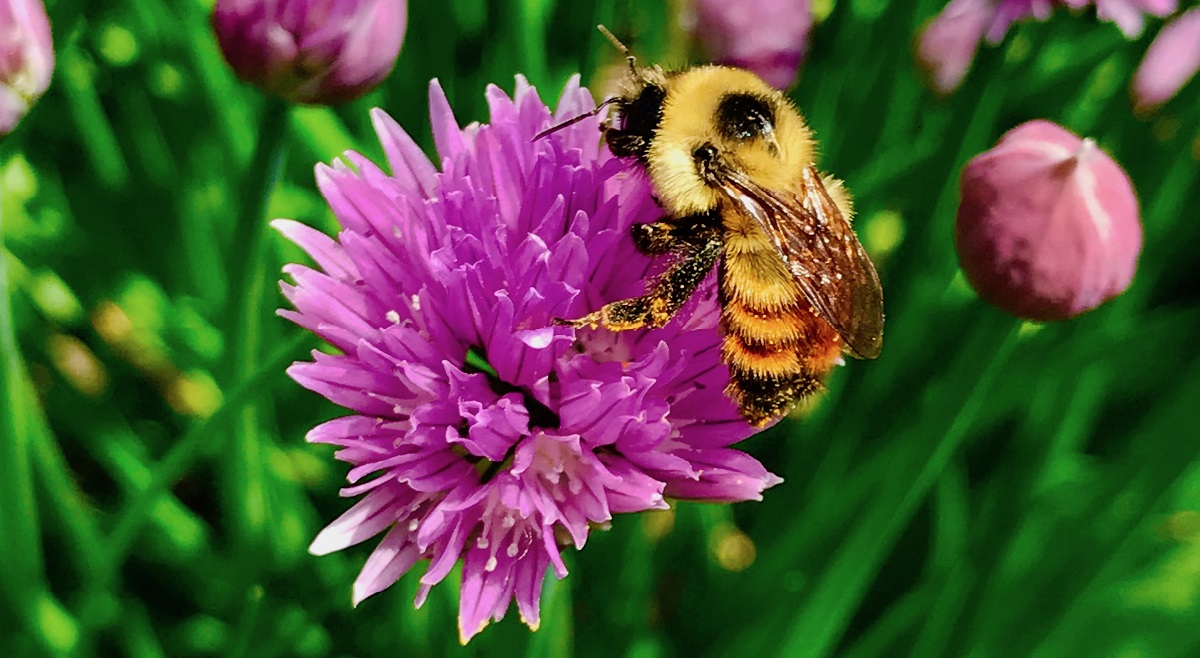
Bumblebees play a crucial role in the pollination of multibillion-dollar crops, contributing to yearly crop yields and increasing diversity in foods available for us to consume. Bumblebees are especially valuable to agro-industry because these insects tolerate cooler temperatures than other bees. They also use a unique technique called “buzz pollination”, where they vibrate their flight muscles to gather pollen from flowers. Such abilities also make them important contributors in maintaining the diversity and abundance of wild plants, adding to the proper functioning and stability of natural ecosystems.
A new study, led by University of Ottawa researchers Catherine Sirois-Delisle and Jeremy Kerr, shows that the far more dramatic climate changes expected in the coming decades will have even greater impact on these critical pollinators, regardless of climate scenarios or assumptions about how fast bumblebees can move away from the worst affected areas.
“We discovered that bumblebee decline is expected to worsen at unprecedented rates across much of North America in the next 50 years,” explained Catherine Sirois-Delisle, a PhD student in biology at uOttawa.

Indeed, widespread climate-driven bumblebee losses are expected in agricultural areas, where bees are already struggling with habitat loss and exposure to agricultural chemicals, further threatening the fundamental pollination services they provide in these areas.
But there is hope!
The research team has uncovered large new areas that will accommodate several of the climatic needs of bumblebees in the future, regardless of how the climate changes, but it is very unlikely that most species will reach and colonize these areas, highlighting the importance of broad-scale strategies to improve conservation prospects.

“Despite the effects of climate change, a few areas will become oases for bumblebee conservation,” added Jeremy Kerr, an associate professor in the Faculty of Science. “We need to take extra conservation care of those bright spots while society mitigates climate change. Otherwise, we expect bumblebee species to be driven outside of their ranges as climate change progresses, and important extinctions to follow.”
New approaches are needed to accelerate efforts to bridge the distances traveled by bumblebees to reach these oases, where they are more likely to survive. The places that will be suitable for many bumblebee species in the future need to be further investigated, since protecting these areas could reduce the likelihood of species extinction and reductions in pollination in North America.
Climate change is probably today’s biggest environmental challenge, and to minimize its impact on wildlife, much more stringent climate policies and mitigation measures are critically needed at an international level, along with support from stakeholders and citizens.

The paper, entitled “Climate change-driven range losses among bumblebee species are poised to accelerate” was published in Scientific Reports.
Simple ways you can help protect bumblebees:
- At a local scale, gardens with bee-friendly flowers are an effective way of connecting habitat patches in the city and helping bees travel through landscapes.
- You can also assist pollinator conservation researchers by using your smartphone to log your bumblebee observations onto citizen science websites, such as www.bumblebeewatch.org , where experts can identify species from photos. Over time, this data is extremely valuable to scientists, helping them to better understand where species live and to assess the effects of various threats at larger scales.
For more information:
